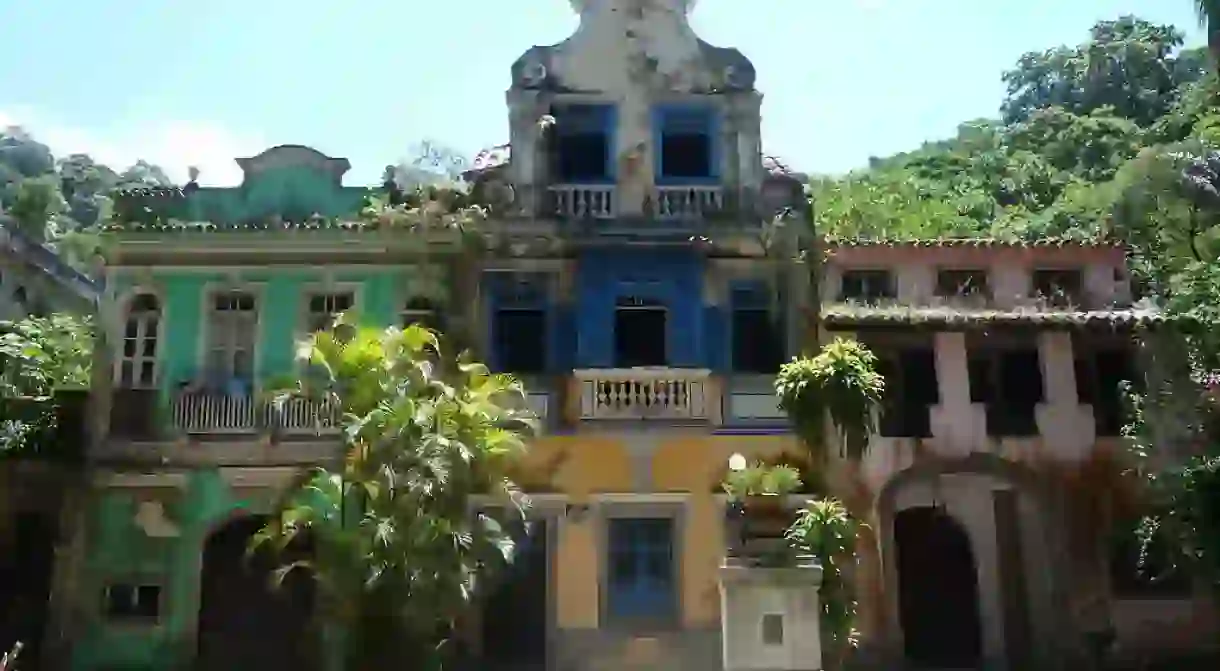A Guide To Largo Do Boticário, A Rio Must-Visit

Tucked into the charming Cosme Velho neighborhood lies Largo do Boticário, a square riddled with a complex history that has cracked through the façade of the neocolonial architecture surrounding it. The area remains practically abandoned nowadays, yet the unique colors and striking designs of the houses make it a fascinating yet lesser-known tourist attraction.
The first thing that catches your attention in Largo do Boticário is the large, neoclassical houses painted in vibrant blues, greens and reds, starkly contrasting with the determined rainforest vegetation that is slowly yet surely creeping in and taking over the square. The houses remain mostly abandoned; the humidity seeps into their walls and provides a fertile base for plants to spawn. However, the obvious lack of maintenance in the area only serves to make it more exotic and exciting.

The history of the square dates back to 1831 when Joaquim Luís da Silva Souto, a hugely successful apothecary who could boast royal family members as clients, bought the land and invested in the houses there. The area became known as Largo do Boticário in honor of Souto (Boticario means apothecary in Portuguese) and was a frequent hangout of famous artists and the political elite.
It wasn’t until the 1920s when Edmundo Bittencourt, the founder of the Correio da Manhã newspaper, brought the property its defining features. Bittencourt invested heavily into the properties and built six neoclassical houses that included material from the colonial era that he was able to rescue from demolition projects around the city. This was the square’s golden age; it became filled with huge houses owned by well-known figures in the Brazilian elite and drew in foreigners attracted by the parties and social events held there. It even starred in a scene of the James Bond movie, Moonraker and was listed as a cultural heritage in 1990.

Since that decade, the once decadent area spiraled into a slow descent of decay. The ownership was passed down to Sybil Bittencourt, who went to live in Europe. When she returned, she found the square filled with prostitutes and stolen cars, and decided that she would no longer invest in the property. Between 2006 and 2008, one of the houses was taken over by a group of homeless people, all of whom were eventually evicted.

Nowadays, the square is not residential, but remains open for visitors. It is stunningly charming and fascinating to visit while trying to unravel the web of history between the six beautifully constructed properties. Whilst its future remains uncertain, there is hope that someone will reinvest in the area and maintain the neoclassical design. One of the houses, number 32, is still in excellent condition and has a permanent art gallery and space for activities, offering a breathtaking venue for a number of tailor-made events.
By Sarah Brown













